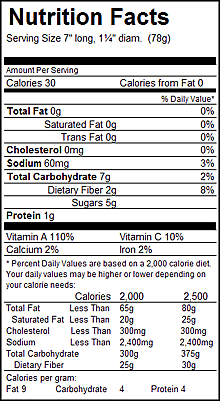Plant science at the dinner table: Carrots
Carrots are Bugs Bunnies’ “go-to food”. Like Bugs, carrots are one of America’s favorite vegetables.

According to “What Gives Bugs Bunny His Lasting Power?” by Smithsonian, in 1940 a gangly, gray rabbit hopped out of a hole in the ground, knocked on a bald man’s head and asked “What’s Up Doc?” to the tune of the crunch of a large carrot. Bugs Bunny was always crunching and munching on carrots. We have all heard the jokes about Bugs never needing glasses, although he sported glasses with his many masquerades. So why didn’t Bugs need glasses? After all, he is 80 years old. The answer is carrots, of course.
Carrots were Bugs Bunnies’ “go-to food”. Like Bugs, carrots are one of America’s favorite vegetables. Carrots are high in vitamin A, which is crucial for good vision. Vitamin A also plays a role in healthy bones, is essential for reproduction, helps cell division and growth, and supports the immune system and skin health.
Americans love carrots. Just think, what is the first vegetable to disappear from a relish tray? Speaking of relish trays, most carrots in the U.S. are consumed raw. The average American consumes 8.7 pounds of fresh carrots per year, which is down from 2006 when the per capita consumption was 12 pounds per year. That number goes up just a couple of pounds when cooked and processed carrots are added to the diet.
Carrots are tasty raw or roasted and added to stews, soups and salads. They are delightful baked in cakes and muffins. It is one of the first foods given to babies. Carrots are versatile in their culinary uses, have gained popularity as a handy snack with the introduction of the baby carrot market, and overall delicious.
Fun facts about carrots
 Carrots are members of the Apiaceace (formally called the Unbeliferae) family. This family also includes celery, anise, dill and cilantro.
Carrots are members of the Apiaceace (formally called the Unbeliferae) family. This family also includes celery, anise, dill and cilantro.- Carrots are biennial. They grow taproots the first year, flower and set seed in their second year.
- The word carrot comes from the Greek word karoton, beta carotene was actually named for the carrot.
- Carrots are the fourth most consumed vegetable in the U.S. according to the U.S. Department of Agriculture. Carrot consumption rises with age and income.
- The first carrots were grown in Afghanistan.
- The number one producer of carrots worldwide is China.
- The first carrots were purple and skinny.
- Dutch scientists bred pale orange carrots in the 1700s.
- In England, people grew carrots for their lacey white flowers.
- Carrots were once used as livestock feed.
- Carrots have huge amounts of vitamin A.
- Carrots contain calcium, phosphorus and potassium.
- There are over 100 varieties of carrots.
- Carrots come in a variety of colors such as orange, yellow, red, white and purple. These colorful carrots are gaining popularity in the U.S.
- Approximately 7,000 acres of carrots are grown in Michigan each year.
- The biggest carrot ever recorded weighed 22 pounds 7 ounces, and the longest 20 feet by 5.9 inches.
Carrots are easy to grow. With the abundance of varieties, you can enjoy carrots of many shapes, sizes and colors. Michigan State University Extension has an excellent guide to growing carrots.



 Print
Print Email
Email





